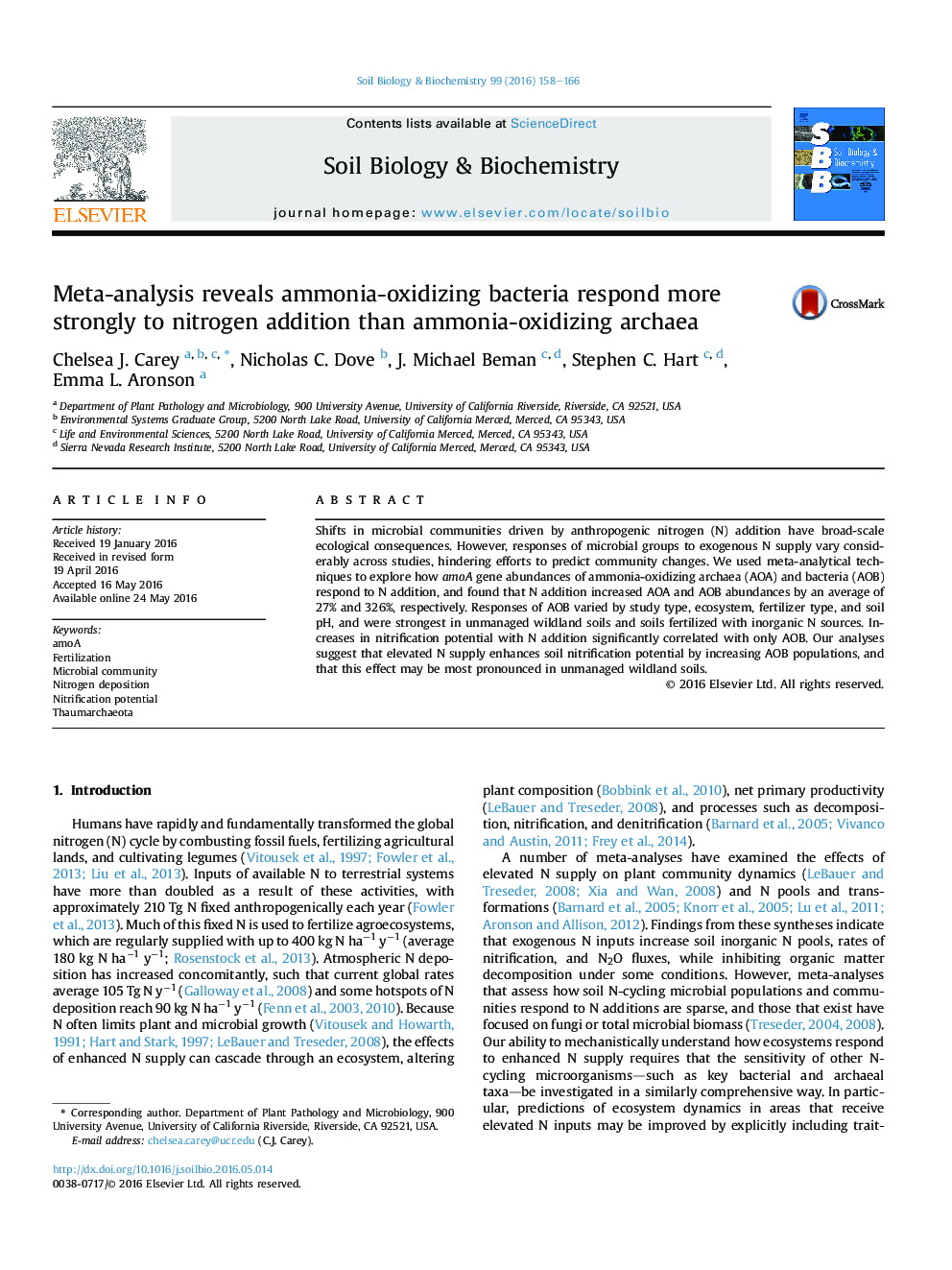| Article ID | Journal | Published Year | Pages | File Type |
|---|---|---|---|---|
| 2024308 | Soil Biology and Biochemistry | 2016 | 9 Pages |
•We quantitatively synthesized soil ammonia oxidizer response to nitrogen addition.•Nitrogen addition stimulated both AOA and AOB amoA gene abundances.•AOB abundances increased more than AOA in response to nitrogen addition.•AOB showed a significant positive relationship with nitrification potential.
Shifts in microbial communities driven by anthropogenic nitrogen (N) addition have broad-scale ecological consequences. However, responses of microbial groups to exogenous N supply vary considerably across studies, hindering efforts to predict community changes. We used meta-analytical techniques to explore how amoA gene abundances of ammonia-oxidizing archaea (AOA) and bacteria (AOB) respond to N addition, and found that N addition increased AOA and AOB abundances by an average of 27% and 326%, respectively. Responses of AOB varied by study type, ecosystem, fertilizer type, and soil pH, and were strongest in unmanaged wildland soils and soils fertilized with inorganic N sources. Increases in nitrification potential with N addition significantly correlated with only AOB. Our analyses suggest that elevated N supply enhances soil nitrification potential by increasing AOB populations, and that this effect may be most pronounced in unmanaged wildland soils.
